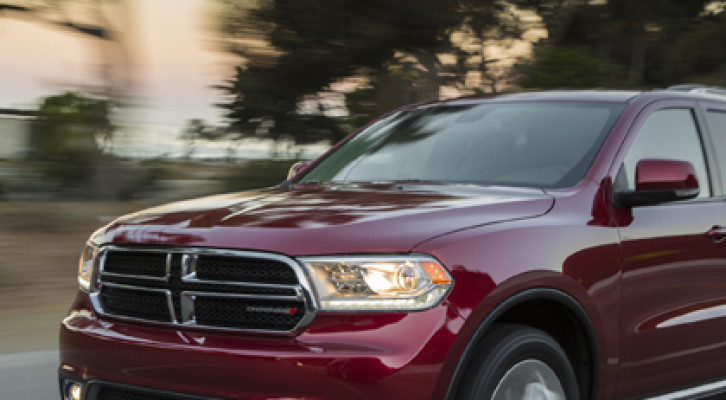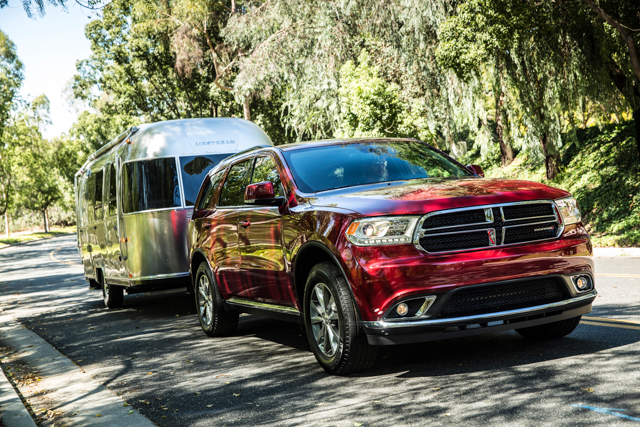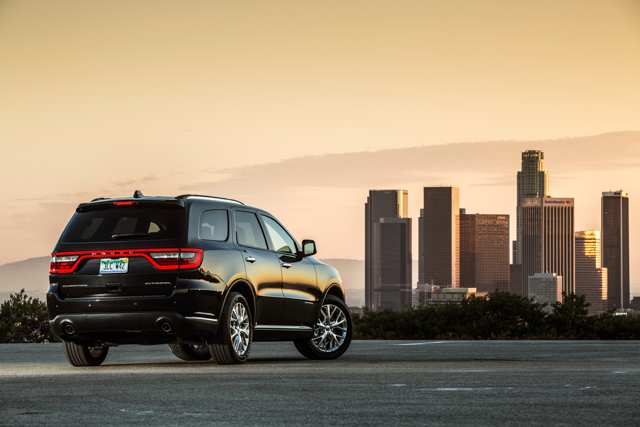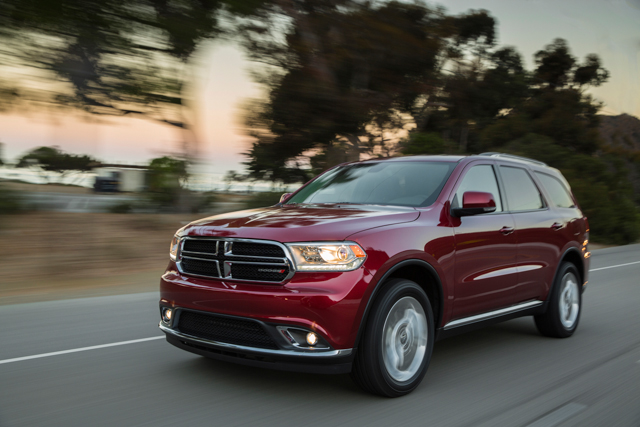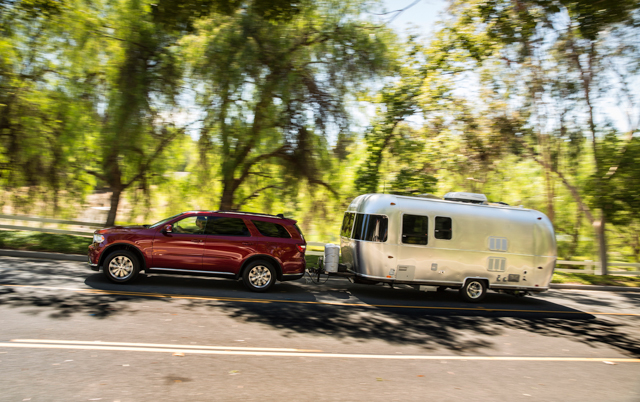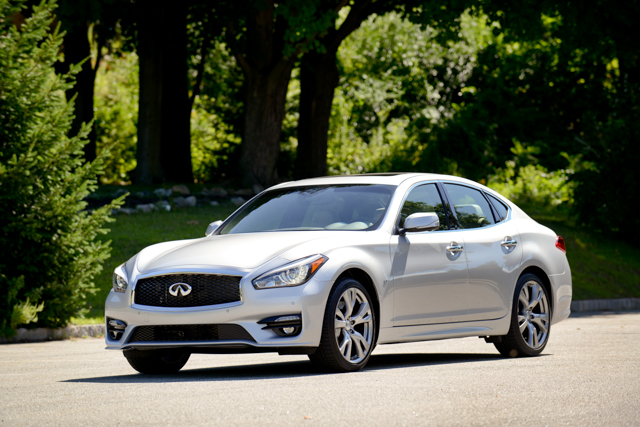“What’s going on with Dodge?” people keep asking. Persistent rumors about the brand’s demise have been swirling for months. The company started by the Dodge Brothers turns 100 this year, and it’s holding down the “youth brand” spot in Chrysler’s array, but that’s no guarantee of survival; Oldsmobile went away shortly after its centenary, and other youth brands like Mitsubishi and Scion aren’t doing so hot at the moment, either.
Still, Chrysler insists that Dodge is not going away any time soon, and as proof, we’ve got a mid-cycle refresh of the Durango. The Durango has always tried to be the “right-sized” SUV. It’s a rear-drive, unibody vehicle that splits the difference between front-wheel drive platforms, such as the Chevrolet Traverse and the Honda Pilot, and body-on-frame vehicles such as the Toyota 4Runner. Like its stablemate, the Journey, the Durango is a very well-built and competent vehicle that, for some reason, just doesn’t stand out on the road.
The solution to that problem? Updated styling, of course. For its mid-cycle refresh, the Durango gets projector head lamps with LED daytime running lights, a “floating” crosshair grille with unique textures between models, and a version of Dodge’s signature “race track” LED taillight ring. The Durango has been upgraded across the board with upscale trim; Dodge has done away with cheap black plastic door handles and mirrors. At the rear, the Durango’s hitch is hidden behind a neat panel. The Durango R/T is even more distinctive, with additional piano-black trim, ground effects, a unique lower fascia and black wheels. The R/T look is also available on the V-6-powered Rallye.
The interior has been significantly restyled as well. It’s simpler, with smoother surfaces and elegant detailing such as illuminated steering wheel controls, as is Dodge’s way. A reconfigurable 7-inch screen in the instrument cluster is standard and is flanked by mechanical gauges. Second-row captain’s chairs now are available and include a choice of low, step-through or full-size consoles. The Durango has made its mark by offering three-row seating and high capability in a package smaller than the Chevrolet Tahoe. All of those seats fold flat, including the front passenger seat for carrying large stuff. In the top of the line Citadel model, handsome two-toning is available.
The Durango also gets the next-generation UConnect infotainment system, a choice of 5-inch or 8 and one-half-inch touchscreen radios, new steering wheels, a rotary shift knob and an available rear-seat Blu-Ray/DVD system with two 9-inch screens mounted on the backs of the front seats with handy connection ports on the side of the driver’s seat.
Under the hood, things haven’t changed too much. The Durango is powered by either the familiar 3.6 liter V-6 or the 5.7 HEMI V-8. The V-6 produces 290 horsepower and is the standard engine; it’s flex-fuel capable. The 360-horsepower V-8 puts more power to the road, but is also equipped with cylinder deactivation to save fuel. What is new is the eight-speed automatic transmission, which is controlled by a snazzy rotary dial on the console. With the extra gears, the V-6 gets up to 25 mpg on the freeway, giving it a range of more than 600 miles. If driven nicely, the V-8 will manage 23 mpg. The transmission includes an ECO mode that downshifts early to take advantage of engine braking and takes other subtle efficiency measures. The intelligent ECO system also will hold gears longer under acceleration, rather than cutting the power, as some systems do. The new transmission is very smooth, thanks to closely-spaced gears, and shifts are smooth even while towing. The available four-wheel drive system includes a low range designed to assist in urban tasks like trailer towing or backing a trailer as well as off-road crawling. Properly equipped, the Durango boasts a 7,400-pound towing capacity, and it’s got a long enough wheelbase that large trailers are easily kept docile. This is one of the few SUVs in its class that’s designed for heavy lifting and hauling.
The Durango is a unibody vehicle, but Dodge has built it tough enough to compete with body-on-frame trucks. The suspension uses a short/long arm setup in the front and a multi-link rear on a subframe for better body isolation. Stiff roll bars keep body sway to a minimum. A Forward Collision Warning system, blind spot detection system with cross-traffic detection and adaptive cruise control are available.
When it comes to three-row SUVs in this class, the competition is stiff. Between the Nissan Pathfinder, Ford Explorer, Honda Pilot and Chevrolet Traverse, the Durango is up to its bumpers in worthy challengers. Dodge is banking on the Durango’s new, more upscale looks and available V-8 power to tip the balance in its favor. Pricing starts at $29,795, and moves up to $32,990 for the V-6-powered Rallye. Continuing up the price ladder, the Durango Limited is $35,995, the Durango R/T is $38,995, and the range-topping Citadel stickers for $40,995.

